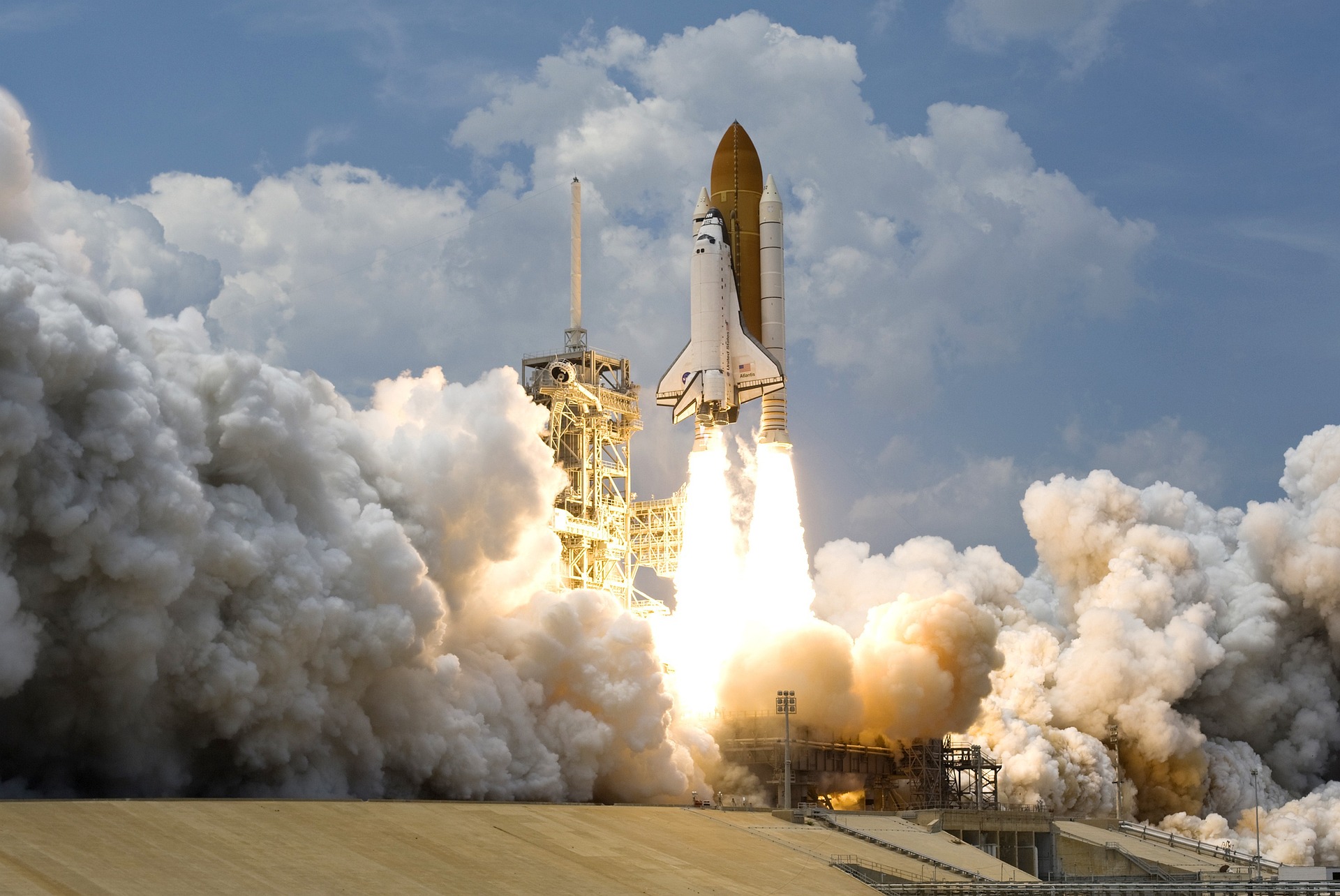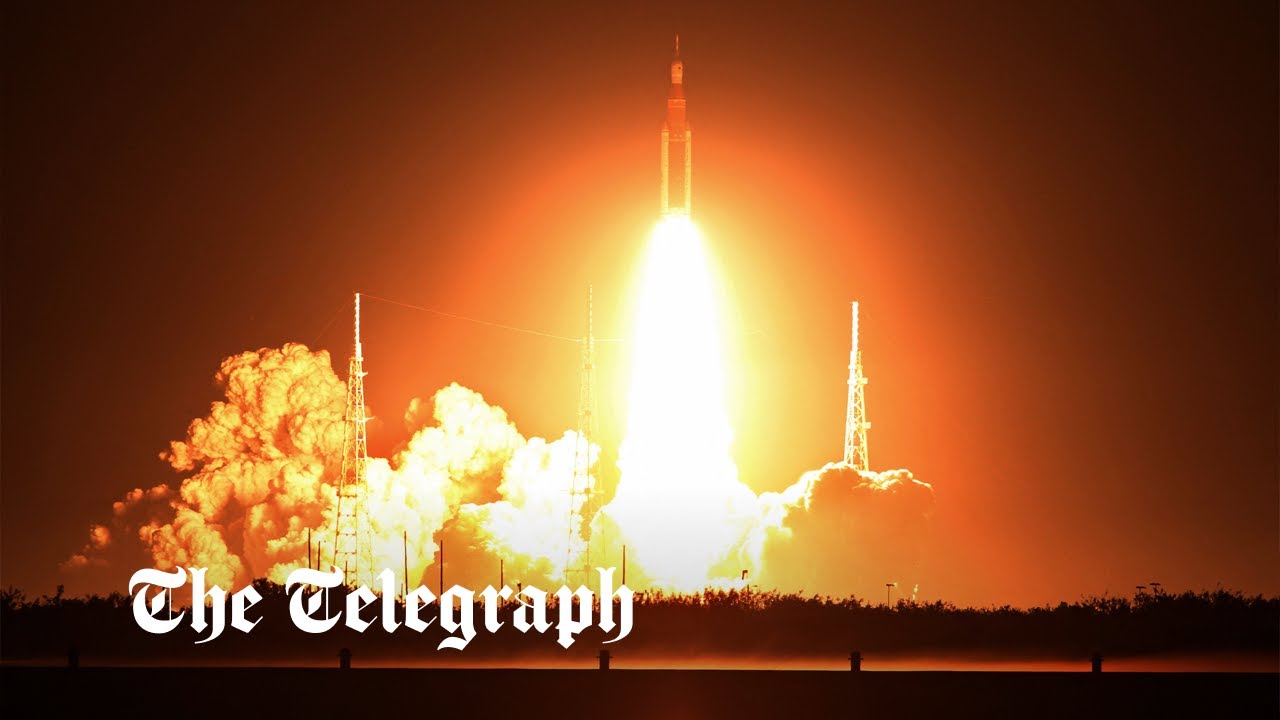Artemis I Finally Launches U.S. Long Awaited Return To The Moon - What Does It Mean For Human Spaceflight?
Artemis I finally launches U.S. long awaited return to the Moon. Around 1:47 a.m. ET, the orange rocket, which was taller than the Statue of Liberty, roared into the sky, slicing the night with a scorching column of crackling fire and blasting shockwaves across the earth near Cape Canaveral, Florida. To the moon it went, bringing with it a space capsule but no astronauts, and a plethora of scientific instruments. The most important thing it carries, however, is a piece of the "American Dream" in the form of the assurance that the United States is still the best at space travel, with the highest aspirations and most advanced technology.
Author:Suleman ShahReviewer:Han JuNov 16, 20221 Shares262 Views

Artemis I finally launches U.S. long awaited return to the Moon. Around 1:47 a.m. ET, the orange rocket, which was taller than the Statue of Liberty, roared into the sky, slicing the night with a scorching column of crackling fire and blasting shockwaves across the earth near Cape Canaveral, Florida.
To the moon it went, bringing with it a space capsule but no astronauts, and a plethora of scientific instruments. The most important thing it carries, however, is a piece of the "American Dream" in the form of the assurance that the United States is still the best at space travel, with the highest aspirations and most advanced technology.
This time around, the massive new rocket that is powering this journey is the Space Launch System, and there are no people on board. Instead, there is a plethora of laboratory equipment. The vast majority of it is dedicated to exploring one central question: how does microgravity affect the human body?
Since humans have been putting humans on top of rockets ever since Yuri Gagarin made historyin 1961, the answer to this question may seem obvious.
However, the longest time anybody has spent in space is around 14 months, and only the 24 men who went to the moon on the Apollo missions in the 1960s and 1970s have ever left Earth's magnetic field, which shields us from most cosmic radiation. When it comes to the effects of space on the human body, particularly the effects of space radiation on the human body and what can be done to minimize them, there is still a great deal that scientists have yet to learn.
The Artemis spacecraft is NASA's first step into deep space, and a mission to Mars would take many years to complete. We need to know what could happen to those people's bodies while they travel so that we can keep them safe.

Watch the Nasa Artemis 1 launch as mission to moon finally lifts off
Superior To Rovers
According to space historian Teasel Muir-Harmony, Apollo was "a technology program to fulfill political aims." The political rivalry and friction between the United States and the Soviet Union was the catalyst for this. The program's goal "was to win the hearts and minds of the global people. It was a statement of international leadership... of the power of democracy and then also of capitalism as explained by Muir-Harmony, curator of the Apollo Spacecraft Collection at the Smithsonian National Air and Space Museum in Washington, D.C.
On July 20, 1969, Neil Armstrong and Buzz Aldrin of the Apollo 11 crew were the first humans to set foot on the Moon. Ten other American soldiers traversed the silvery, lifeless landscape of Earth's lone natural companion over the course of the following several years. On December 14, 1972, Apollo 17 completed the last landing mission in that series. Humans ceased walking on the moon when Apollo 17's Eugene Cernan and Harrison H. Schmitt left their footprints in the lunar dust and returned to the command module to join Ronald Evans.
Since Apollo 17, over a dozen spacecraft from a variety of nations have made the journey to the moon. There have been rovers that have orbited the moon, smashed into the surface and sent samples back to Earth for analysis, and rovers that have landed on the moon and sent back samples to Earth.
These unmanned spacecraft have made significant advances in lunar exploration, but humans are capable of much greater feats. According to space historian Teasel Muir-Harmony, Apollo was a technology program to fulfill political aims. The political rivalry and friction between the USA and USSR was the catalyst for this. The goal of the initiative was to win over the public's support throughout the globe.
“„It was a statement of international leadership... of the power of democracy and then also of capitalism.- Muir-Harmony, Apollo Spacecraft Collection
On July 20, 1969, Neil Armstrong and Buzz Aldrin of the Apollo 11 crew were the first humans to set foot on the Moon. Ten other American soldiers traversed the silvery, lifeless landscape of Earth's lone natural companion over the course of the following several years.
On December 14, 1972, Apollo 17 completed the last landing mission in that series. Humans ceased walking on the moon when Apollo 17's Eugene Cernan and Harrison H. Schmitt left their footprints in the lunar dust and returned to the command module to join Ronald Evans. These unmanned spacecraft have made significant advances in lunar exploration, but humans are capable of much greater feats.
If Yeast Can Survive Space, We Might Too
Helga, Zohar, and Moonikin Campos will only spend three weeks in orbit. In contrast, Artemis Additionally, transporting a number of yeast cells, which will be remaining in space permanently.
Sergio Santa Maria, project scientist at NASA's Ames Research Center and lead scientist on a mission called BioSentinel says that yeast happens to be very similar to humans and how we respond to radiation. BioSentinel is sending a CubeSat (essentially a very small satellite) into space with Artemis I. After reaching orbit, it will eventually fall into a solar orbit. For the first time since Apollo 17 in 1972, this satellite will be the vehicle for a study of biological reactions to deep space radiation.
There are a few tasks when yeast comes in really useful, and this is one of them. Because its DNA degrades similarly to human cells when exposed to radiation, it has been used as a stand-in for human cells in scientific investigations for a long time. For a mission with as many setbacks as Artemis, this is a practical convenience as well. When dried and inactive, it can be kept for far longer than most living things.
The yeast will be rehydrated after it enters solar orbit, and the growth rate and kind of radiation exposure will be monitored by Santa Maria and his team. Every several months, a fresh batch of yeast will be activated to examine whether prolonged radiation treatment slows their development.
As Santa Maria put it that we do not know what to anticipate from this extended exposure to all types of particles at the same time, but they are hoping to learn more and offer knowledge for future missions.
The effects of this experiment won't be limited to human beings: Since yeast is utilized in the production of foods like yogurt and probiotics, it may be useful for the production of food on long-term missions like those to the moon or Mars.
Seeing how well it works in space over a lengthy period of time might effectively assist with the space equivalent of meal prep; the satellite will merely continue circling the sun endlessly. It takes a little longer for events to occur than they would on Earth.
BioSentinel's Helga, Zohar, Moonikin Campos, and yeast will provide crucial information to scientists on Earth as NASA prepares future moon and beyond expeditions.
Final Words
NASA is spearheading the development of a new space station to aid these lunar colonists. When finished, the Gateway will be in lunar orbit. This might happen as soon as the 2030s. Gateway, like the International Space Station before its decommissioning in 2031, will serve as a commercial and international scientific hub. It will also be a stopover for interplanetary journeys to Mars and beyond.

Suleman Shah
Author
Suleman Shah is a researcher and freelance writer. As a researcher, he has worked with MNS University of Agriculture, Multan (Pakistan) and Texas A & M University (USA). He regularly writes science articles and blogs for science news website immersse.com and open access publishers OA Publishing London and Scientific Times. He loves to keep himself updated on scientific developments and convert these developments into everyday language to update the readers about the developments in the scientific era. His primary research focus is Plant sciences, and he contributed to this field by publishing his research in scientific journals and presenting his work at many Conferences.
Shah graduated from the University of Agriculture Faisalabad (Pakistan) and started his professional carrier with Jaffer Agro Services and later with the Agriculture Department of the Government of Pakistan. His research interest compelled and attracted him to proceed with his carrier in Plant sciences research. So, he started his Ph.D. in Soil Science at MNS University of Agriculture Multan (Pakistan). Later, he started working as a visiting scholar with Texas A&M University (USA).
Shah’s experience with big Open Excess publishers like Springers, Frontiers, MDPI, etc., testified to his belief in Open Access as a barrier-removing mechanism between researchers and the readers of their research. Shah believes that Open Access is revolutionizing the publication process and benefitting research in all fields.

Han Ju
Reviewer
Hello! I'm Han Ju, the heart behind World Wide Journals. My life is a unique tapestry woven from the threads of news, spirituality, and science, enriched by melodies from my guitar. Raised amidst tales of the ancient and the arcane, I developed a keen eye for the stories that truly matter. Through my work, I seek to bridge the seen with the unseen, marrying the rigor of science with the depth of spirituality.
Each article at World Wide Journals is a piece of this ongoing quest, blending analysis with personal reflection. Whether exploring quantum frontiers or strumming chords under the stars, my aim is to inspire and provoke thought, inviting you into a world where every discovery is a note in the grand symphony of existence.
Welcome aboard this journey of insight and exploration, where curiosity leads and music guides.
Latest Articles
Popular Articles